Tsunami archaeology dig continues at Low Hauxley
At the beginning of the summer, work started on a unique archaeological dig on the north Northumberland coast. It began as a race-against-time investigation of a Bronze Age burial cairn literally falling out of the cliff face, but developed into an amazing opportunity to uncover evidence of a prehistoric tsunami or sandstorm from the time Britain separated from the continent.
The Ambler talked to lead archaeologist Clive Waddington at the start of the dig. Here we catch up with Steve Lowe, Head of Conservation at Northumberland Wildlife Trust to find out how the project has progressed.
The dig here on the Low Hauxley dunes started in July. What have you discovered so far?
The dig has been going for a couple of months, it was supposed to finish this Friday (16 August). There’s been some amazing finds on the site, which include artefacts from prehistoric times. Red deer antlers have come out of the peat beds, we’ve found some burials on site. There are also nearly 10,000 flints that have been found, which is an amazing total, which shows that the site has been occupied for a long, long time.
One of the interesting finds as well, a whetstone – that came out almost like the day it had been put into the ground by the looks of it. There was also an area to one side of the dig that had a patio on it. There was evidence of Roman occupation in there. But also right back to the Mesolithic period. Once that had been lifted, it was realised that it was a tomb that had been reused to create flagstones.
There were also boulders that have got signs of the cup and ring markings that you get elsewhere in Northumberland – which was a wonderful find in itself and tells us a little bit about the links in the area.
Why are you extending the dig?
The most important thing that’s come out has been this soil deposit. There is evidence here of a storm event which we would nowadays call a tsunami. The supposition is that this is the one event that created the UK, [it] separated us from the continent.
I’m pleased to be able to say that we’ve secured some additional funding from the Heritage Lottery Fund, to allow this dig to progress for another three weeks, so that this particular event can be explored further. We’ll also be able to see then what’s underneath that.
The tsunami event can be dated back to 8200BC… what we want to find out is what’s underneath. We hope we’re going to find evidence that man was here before that time, as has been found in Howick, and [if we do, it] will put this as one of the most important sites, because we didn’t really know that man was here that long ago, further north than Yorkshire.
Can you tell me a bit about the volunteers, what have they got out of the project?
So far on site, the support has been brilliant. We’ve had at least 20 volunteers every day. Most of them have not done archaeology before. Many, if not the majority come from the local area; there’s still now an opportunity for another three weeks of work.
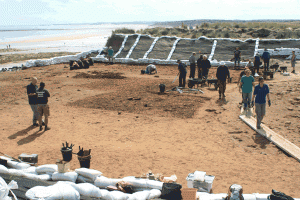
The site has changed significantly during the summer, as archaeologists dig from the Bronze Age levels, further down into the tsunami age soil
So we need more volunteers to help with that – a number of the people are going to come back. Its hard work, but it’s really rewarding , especially when you come across something that hasn’t seen the light of day for 8000 years!
Once we’ve finished, we’re also going to need people to help to put it back .. most of the soil is going to go back via machine, I’m thankful to say, but we’ll need people to help plant marram grass and things like that , so we can recreate the dune system that was here in the first place.
I’ve spoken to a number of people who’ve been volunteering, young and old, which is brilliant, and they’ve all got something different out of it, not least a long, hot soak at the end of the day!
So has the project met your expectations?
From the Wildlife Trust’s point of view, this project has massively exceeded what we thought we’d get out of it. Firstly, the finds have been great – more than what was expected. It’s given us a great picture of what went on here in the past, how the whole are has changed, how man has used it, exploited it and how that’s changed over time.
It might be a strange thing for a wildlife trust to be doing an archaeology project, but actually we’re interested in this whole area and how it fits together. The evidence from this, and the support from the local community and local volunteers, all helps up build up for a wider landscape scale project right across Druridge Bay. This is an essential piece because we’re rescuings omethiogn that is falling into the sea.
I’d also like to comment on the number of people who’ve visited the site. It’s not on the main map, but every time I’ve visited the site, there are at least 20 -30 people; they either arrive on bikes, or walk up, and just see [the dig] and they’re interested. Everyone’s gone from here with a really good impression of the area, which is fantastic.
If you would like to help with the last couple of weeks of the dig, please contact Northumberland Wildlife Trust
Anna Williams
See also: Uncovering Bronze Age Hauxley devastated by sandstorm
Clive Waddington describes the excavation at Low Hauxley. Video (3m 20s)
This article was updated on 27 August





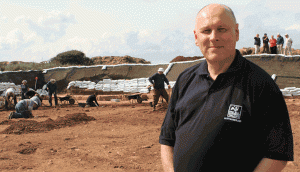
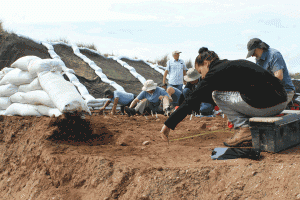
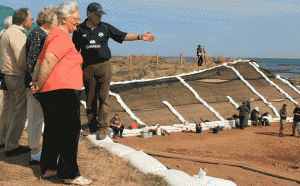
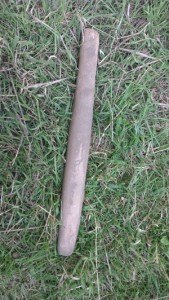
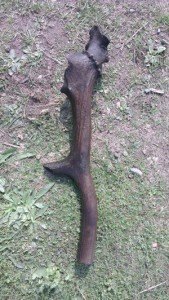
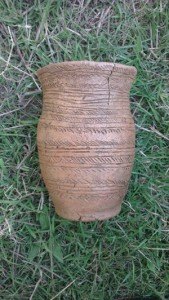







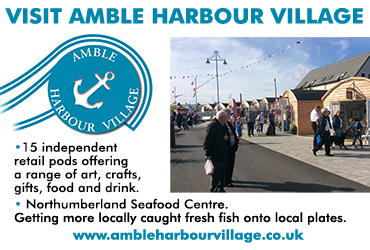
Hi. Due to you have mentioned the Tsunami I thought that you and your readers would be interested in a new 2013 charity song named ‘Tsunami Day’ that was recorded on Phuket in Nov 2013. 100% of all downloads will go directly to a local Phuket charity and will help introduce music and the arts to the Phuket orphans. You can see full details and listen on both these sites: http://www.tsunamiday.com and http://www.hoteldealsphuket.com. It’s the 9th anniversary of the 2004 Asian Tsunami on the 26th of December so I am hoping that you will approve this post. Happy holidays. Regards, Mark.